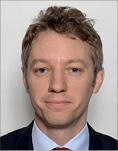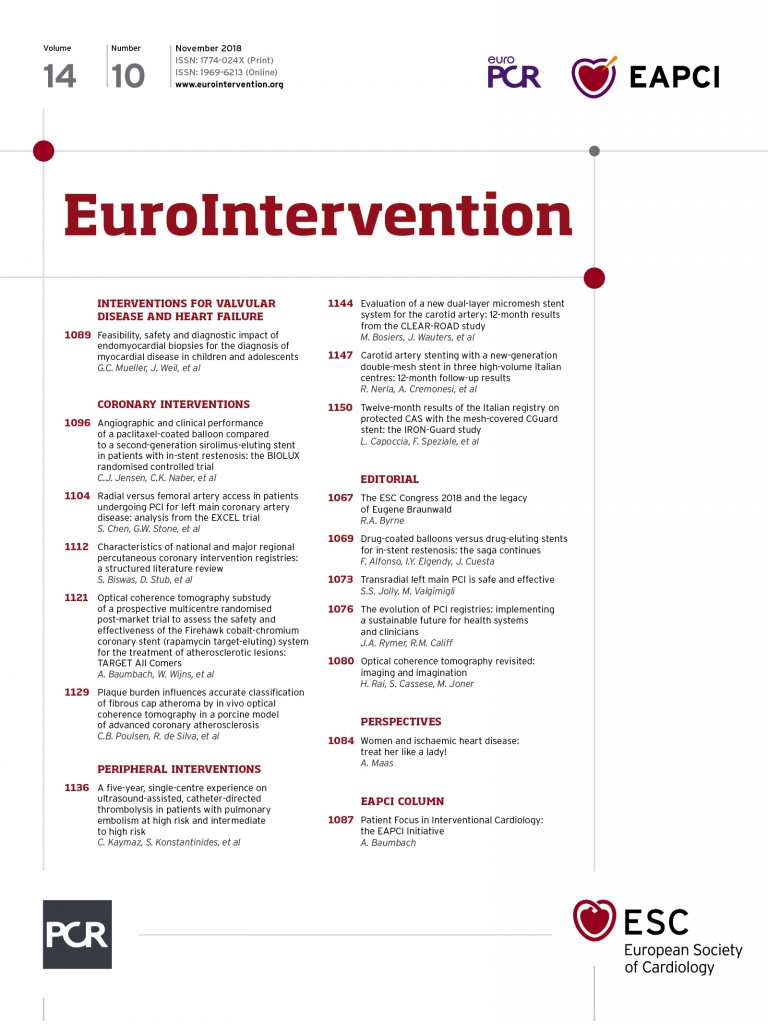
In 2000, the editors of the ESC’s journal asked all of the living winners of the Nobel Prize in physiology or medicine this question “Who has contributed the most to the practice of cardiology in recent years?”. Only one name was suggested by every respondent: Eugene Braunwald.
T.H. Lee in Eugene Braunwald and the Rise of Modern Medicine1,2
The recent ESC Congress in Munich was another very successful meeting with high attendance, a variety of innovative educational sessions, excellent logistical organisation and superior quality late breaking clinical trials. In fact, the attendance of 32,800 at this year’s event was the third highest of all time, which is remarkable indeed when one considers the changing times in relation to physician sponsorship for attendance at scientific meetings and that attendances in Munich are generally somewhat lower than at other ESC Congress locations. Great credit is due to Stephan Achenbach –as chair of the ESC Congress Programme Committee 2016-2018– and the entire team of volunteers and ESC staff who planned and developed the programme over the last 12 months. Indeed, at the time of writing, plans are well advanced for the individual sessions that will comprise next year’s meeting in Paris.
Sometimes having a major scientific meeting take place in your home town necessitates even more juggling of time than when travelling to a different city. Sessions and meetings can be sandwiched between routine paperwork, clinical and administrative duties and home life, all of which continue in parallel to the temporary excitement and bustle of the scientific sessions. The proximity of the meeting to the home institution also affords the pleasure of visits to the clinic from friends and colleagues for a coffee or a brief tour or even to spend some time in the cath lab.
This year was no exception. One of the visitors – John Bittl, who is well known for many reasons, including his regular contributions to the JACC journals – stopped by for a chat on the day before the meeting started and the conversation turned to the high-quality programme and to the anticipation of a number of presentations, including from Eugene Braunwald, whose contributions remain a highlight for many of us attendees. I quickly discerned from John that there was much about the early life and career of the most famous living cardiologist that I was not aware of. It was with great pleasure and a little surprise that a few days later I found that a copy of Thomas H. Lee’s 2013 biography – Eugene Braunwald and the Rise of Modern Medicine1 – had been delivered to my desk and I quickly set about filling in the gaps.
Lee’s biography is an enlightening account of the life and career of Braunwald, at once comprehensive and personal, reflecting his many interactions with Braunwald since their first meeting in 1979. Growing up in Austria during the rise of German National Socialism, on the human side one of the most memorable passages describes the events of Saturday 30th July 1938, when an eight-year-old Eugene was woken by his parents in Vienna and told that the family was going on a picnic for the day. With only a flask of tea and a few sandwiches they took a tram and a taxi and a train, crossed into Switzerland, and ultimately arrived in London two days later with no personal possessions. Just over two months later – at the height of U-boat activity in the North Atlantic – they boarded a steamship bound for New York, huddled into a single cabin in the lowest passenger class, and set sail for a new life in the USA.
Braunwald’s education as a medical student at New York University Medical School and Bellevue Hospital and his internship at Mount Sinai are detailed in the book. His subsequent training and research paths crossed with a “Who’s who” of researchers in cardiovascular medicine of that time. His initial focus was on the emerging field of haemodynamics and he secured a position in the laboratory of Andre Cournand, another American immigrant already famous and respected at the time when Braunwald joined. In his next positions at the National Institutes for Health (NIH) and Johns Hopkins University he worked with Stanley Sarnoff, Carl Wiggers (the founding editor of Circulation Research) and the surgeon Glenn Morrow, who became one of his most important collaborators, as well the pioneering shunt surgeons Helen Taussig and Alfred Blalock. He enjoyed a prolific research career in his early years and returned to NIH at the age of 28 to become director of the cardiac catheterisation laboratory within the surgical section.
It was a time of plenty for research funding at NIH and the next 10 years were to be recalled as the golden years of NIH. Here Lee recounts a number of memorable anecdotes, such as the time when cardiac valve surgery was beginning to take off and patients were being considered for operation. Discussing cases and realising the well-defined surgical risks, Braunwald was asked by the surgeon Glenn Morrow what the natural history of patients with aortic stenosis would be without treatment. He was forced to admit that as a cardiologist he did not know. This led to the research on this topic that remains one of his most well-known contributions to the literature3. Then there was the occasion when he was summoned in rage to the operating room where Morrow was operating on a patient sent by Braunwald with aortic stenosis. “There’s been a terrible screw up here”, Morrow said on finding a healthy-looking valve when he opened the patient. It was only when a second case occurred sometime later that they realised they had discovered a new disease entity – hypertrophic cardiomyopathy4,5. Also at NIH he developed a measurement tool for heart failure known as the ejection fraction6 and carried out important work elucidating the role of noradrenaline in the pathogenesis of heart failure7. As William Roberts noted of that era, “there were periods when he was completing a significant paper almost every week”1.
Moving to San Diego in 1968, he completed work in a dog model showing that the size of infarction induced by occluding a coronary artery could be changed by giving medications before or after the occlusion8. This paper, which came to be known as the Factors Paper, is regarded by Braunwald as his most important. The report is juxtaposed with Lee’s description earlier in the book of President Dwight Eisenhower’s heart attack on 23rd September 1955, where famously the treatment of the time was to lie down and wait for the infarction to complete. There is much more detail on Braunwald’s stellar career, including his appointment as the tenth Professor of Medicine at Harvard in July 1972, his involvement in clinical trial research and the founding of the TIMI group – one of the first academic research organisations – as well as his contributions as editor for twelve editions of Harrison’s Internal Medicine and the now eponymous Braunwald’s Heart Disease. Controversies such as the “Darsee affair” and the criticism of the ethical conduct of the early studies of Braunwald and his contemporaries by Harvard professor Henry K. Beecher are also detailed9.
The biography of Braunwald serves as an inspiration for practising cardiologists, clinician researchers and medical educators, and contains lessons for career development that stand the test of time. In the commemorative editorial to Braunwald published in the European Heart Journal in 2000, appropriately the editors pay tribute to him on all three fronts: “He is first and foremost an outstanding doctor. His research contributions in the field of heart failure, ischaemic heart disease, and more recently clinical trials have been unique. However, it may well be that his principal contribution is in the world of teaching”2.

